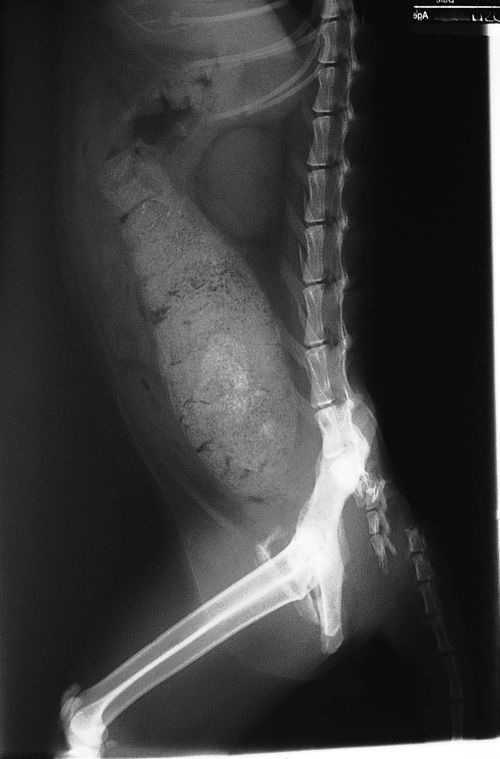Small Animal Soft Tissue Surgery Q&A 16
| This question was provided by Manson Publishing as part of the OVAL Project. See more Small Animal Soft Tissue Surgery Q&A. |
A five-year-old, domestic shorthair cat was presented with signs of obstipation, anorexia, vomiting and weight loss. A lateral abdominal radiograph of this patient is shown.
| Question | Answer | Article | |
| What is the diagnosis? | Acquired (idiopathic) megacolon. |
Link to Article | |
| Describe the medical and surgical therapy. | Medical therapy provides only temporary relief, but should be utilized first and until it is no longer effective. Acute episodes of constipation are treated with laxatives and enemas. Chronic treatment is provided by use of stool softeners, increasing dietary fiber content and treatment with motility modifiers (bisacodyl, cisapride). Surgical treatment is by subtotal colectomy. The ileocecocolic valve can be spared (colorectal anastomosis) reducing bacterial reflux into the small bowel, or it can be excised (ileorectal anastomosis) reducing the likelihood of redistension of the colonic remnant. |
Link to Article | |
| What is the quality of enteric function of cats after surgical treatment for this problem? | In one study no subclinical or clinical evidence of abnormal bowel function was found in normal cats after subtotal colectomy. Bowel movements occurred only slightly more frequently compared with normal cats, and the only significant difference between the two groups was a higher serum cobalamine concentration in the cats in which colectomy was performed. |
Link to Article | |
